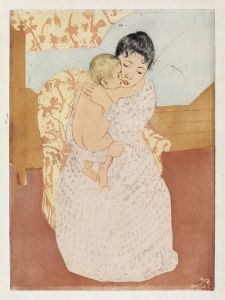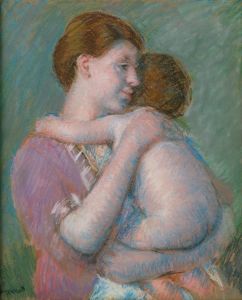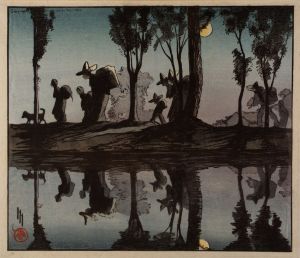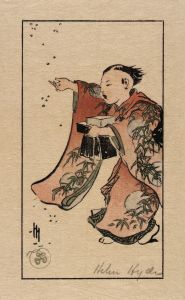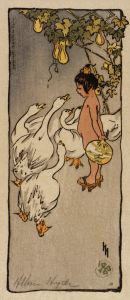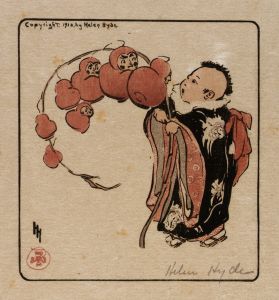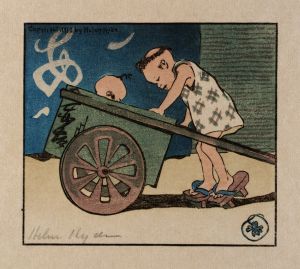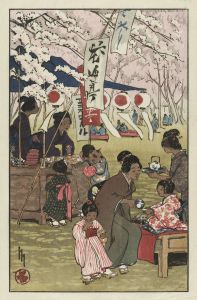
The Family Umbrella
A hand-painted replica of Helen Hyde’s masterpiece The Family Umbrella, meticulously crafted by professional artists to capture the true essence of the original. Each piece is created with museum-quality canvas and rare mineral pigments, carefully painted by experienced artists with delicate brushstrokes and rich, layered colors to perfectly recreate the texture of the original artwork. Unlike machine-printed reproductions, this hand-painted version brings the painting to life, infused with the artist’s emotions and skill in every stroke. Whether for personal collection or home decoration, it instantly elevates the artistic atmosphere of any space.
Helen Hyde (1868–1919) was an American artist known for her work in color etching and woodblock prints, particularly those that reflect the influence of Japanese art. One of her notable works is "The Family Umbrella," which exemplifies her unique style and the cultural exchange between the West and Japan during the late 19th and early 20th centuries.
Hyde was born in Lima, New York, and grew up in San Francisco, California. She studied art in the United States and Europe, where she was exposed to various artistic styles and techniques. However, it was her time in Japan that had the most profound impact on her work. In 1899, Hyde traveled to Japan, where she became deeply influenced by Japanese ukiyo-e prints. She studied under the guidance of Japanese artists such as Kano Tomonobu and learned the traditional techniques of woodblock printing.
"The Family Umbrella" is one of Hyde's works that showcases her mastery of the Japanese woodblock printing technique. This piece reflects her fascination with Japanese culture and her ability to blend Western and Eastern artistic traditions. The print typically features a family scene, often with figures depicted in traditional Japanese clothing, and an umbrella, which is a recurring motif in her work. The use of vibrant colors and delicate lines is characteristic of Hyde's style, capturing the essence of Japanese aesthetics while maintaining a unique Western perspective.
Hyde's work, including "The Family Umbrella," played a significant role in the Japonisme movement, which was the Western fascination with Japanese art and culture during the late 19th and early 20th centuries. Her prints were well-received in both the United States and Europe, and she exhibited her work widely, gaining recognition for her contributions to the art world.
In addition to her artistic achievements, Helen Hyde was also a pioneer for women in the arts. During a time when female artists were often marginalized, she managed to establish a successful career and gain international acclaim. Her work not only reflects her personal artistic journey but also serves as a testament to the cultural exchanges between the East and West during her time.
Hyde's legacy continues to be celebrated today, with her works held in various collections, including those of major museums and galleries. "The Family Umbrella" remains an important example of her contribution to the art world, illustrating the harmonious blend of different cultural influences and the innovative spirit of an artist who bridged the gap between two worlds.
Overall, Helen Hyde's "The Family Umbrella" is more than just a piece of art; it is a reflection of a historical period of cultural exchange and the enduring impact of Japanese art on Western artists. Her work continues to be studied and appreciated for its artistic merit and its role in the broader context of art history.







